1. Allergen-Specific Immunotherapy
Allergen-specific immunotherapy, commonly referred to as allergy shots, is a medical procedure that includes gradually exposing a patient to allergens like dust mites or pollen in order to build immunity and lessen susceptibility to them.
The treatment for eczema brought on by allergies, such as atopic dermatitis, is allergen-specific immunotherapy. The immune system may be made to become less sensitive to the allergen over time and cause less of an allergic reaction by progressively exposing the person to the allergen.
The normal procedure for allergen-specific immunotherapy is to provide a series of injections over the period of many months to years, with the dosages being increased progressively. After the first treatment period, a maintenance dosage could occasionally be administered to support immune maintenance.
In those with a history of allergies, allergen-specific immunotherapy can reduce eczema symptoms, but it may not be suitable for everyone and can have adverse effects, such as local responses at the injection site or allergic reactions.
It’s important to keep in mind that the best treatment for eczema varies from person to person, and it may take some time to find the right combination of treatments that works for you.
Your healthcare provider can help you determine the most effective treatment plan based on the severity and type of your eczema, as well as other factors such as your age, overall health, and personal preferences.
Symptoms And Causes
Here are the various eczema symptoms and reliefs that you should know about.
7. Redness
Redness occurs because the skin barrier is damaged, allowing irritants and allergens to penetrate the skin more easily and trigger an immune response. This can result in redness, itching, and inflammation, which can be further exacerbated by scratching or rubbing the affected area.
The redness associated with eczema can range from mild to severe and can affect small or large areas of the skin. The redness may be accompanied by other symptoms of eczema, such as itching, flaking, and blistering.
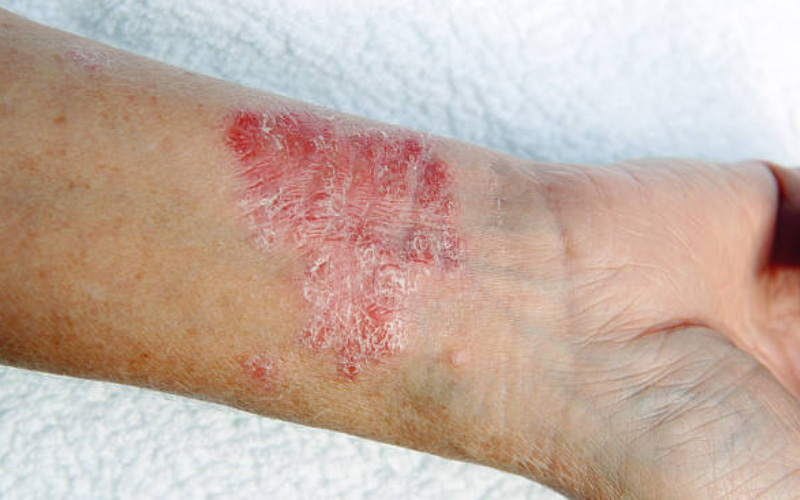
6. Dry, Scaly Skin
Dry scaly, skin also occurs since the skin barrier is already damaged. Since it’s damaged, it becomes weak and cannot hold moisture.
Due to a number of causes, including the decreased barrier function of the skin, the loss of natural oils, and irritation from scratching, eczema can make the skin dry, rough, and scaly.
The skin’s natural barrier function is impaired, enabling moisture to escape and leaving the skin dry and vulnerable to itching and irritation. Excessive washing, extreme heat or cold, and the use of abrasive soaps or other skin care products can all aggravate this.
Eczema-related dry, scaly skin can itch, and scratching can make the skin even drier, aggravating the itching and causing additional skin damage.
The use of moisturizing lotions and ointments, avoiding triggers that might dry out the skin, and utilizing mild, non-irritating skin care products are all ways that eczema treatment can help control the symptoms of dry, scaly skin.
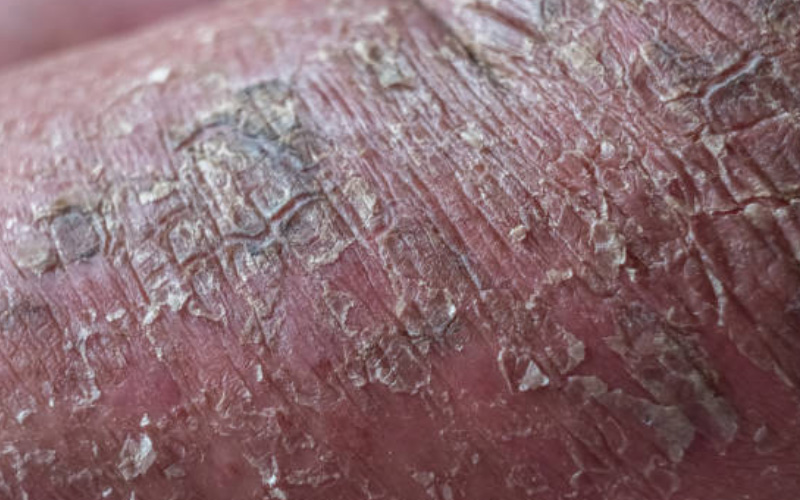
5. Itchiness
Itchiness is a common and often debilitating symptom of eczema. Eczema-related itching can be modest to severe and has a substantial negative impact on quality of life.
Eczema patients have weaker skin barriers, which makes it easier for allergens and irritants to infiltrate the skin and cause an immunological reaction. Itching, redness, and inflammation may arise from this.
Eczema-related itching can be so severe that it can be difficult to refrain from scratching, which can worsen symptoms and cause further skin damage.
4. Swollen Skin With Rashes
Eczema frequently manifests as swollen skin that has rashes. Due to a number of causes, including irritation, itching, and the production of histamine in reaction to allergens or irritants, eczema can result in skin that is inflamed, red, and swollen.
Eczema patients have weaker skin barriers, which makes it easier for allergens and irritants to infiltrate the skin and cause an immunological reaction.
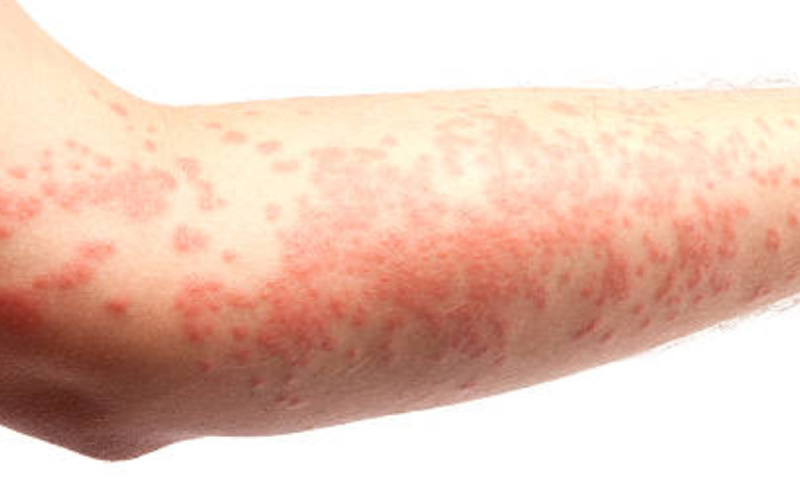
In severe situations, the skin may swell up and develop rashes in addition to itchiness, redness, and inflammation.
3. Skin Discoloration
In individuals with eczema, the skin can become discolored as a result of itching and scratching, which can lead to hyperpigmentation (darker skin color) or hypopigmentation (lighter skin color).
Discoloration can occur due to the formation of scar tissue as a result of skin damage from chronic itching and scratching.
In addition, the skin’s natural protective barrier may be disrupted, leading to increased exposure to UV radiation, which can also cause discoloration.
2. Painful Lesions
Painful lesions can be brought about by the effects of excessive scratching of the affected area. In individuals with eczema, the skin can become dry, itchy, and inflamed, which can lead to the development of painful sores or lesions.
Painful lesions can occur as a result of scratching, which can damage the skin and lead to the formation of sores or abrasions. In addition, bacterial or fungal infections can develop on top of the skin in areas affected by eczema, which can cause further pain and discomfort.
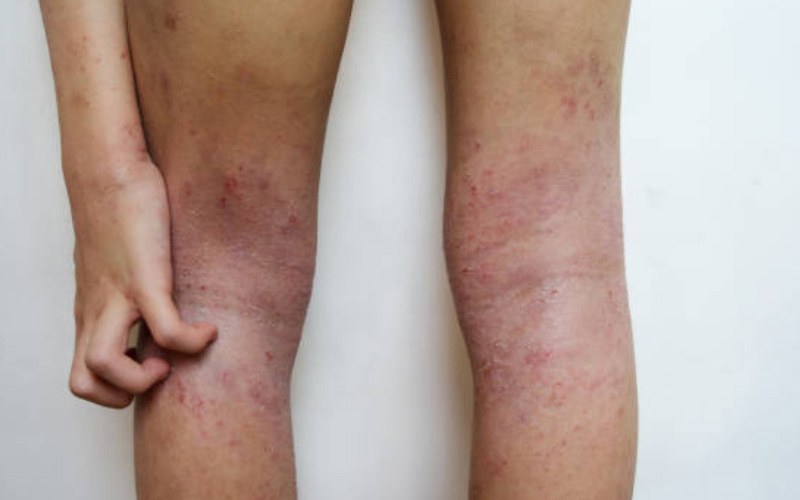
1. Oozing Blisters
Eczema can cause the skin to become dry, itchy, and inflamed, which can lead to the development of blisters that ooze fluid. These blisters are a result of the skin becoming infected or damaged, and they can cause additional itching, redness, and pain.
The formation of oozing blisters is more likely to occur in individuals with severe eczema, and it can be a sign of a more serious infection or skin condition.
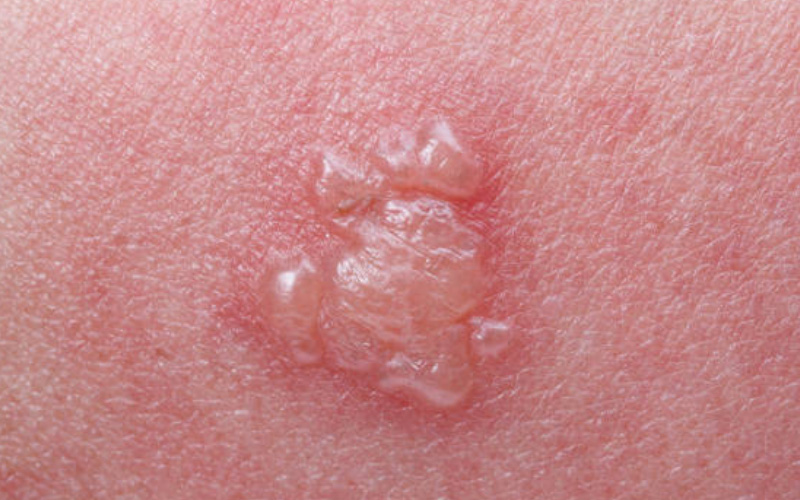
In addition, bacterial or fungal infections can develop on top of the skin in areas affected by eczema, which can cause further pain and discomfort.
Knowing these symptoms and treatments can help lessen the burden of eczema and eventually, eradicate it in the long run.
